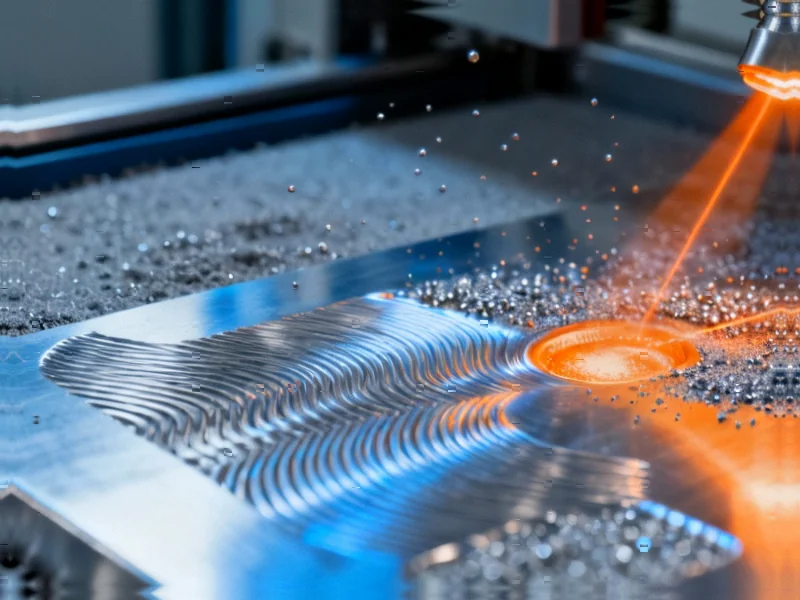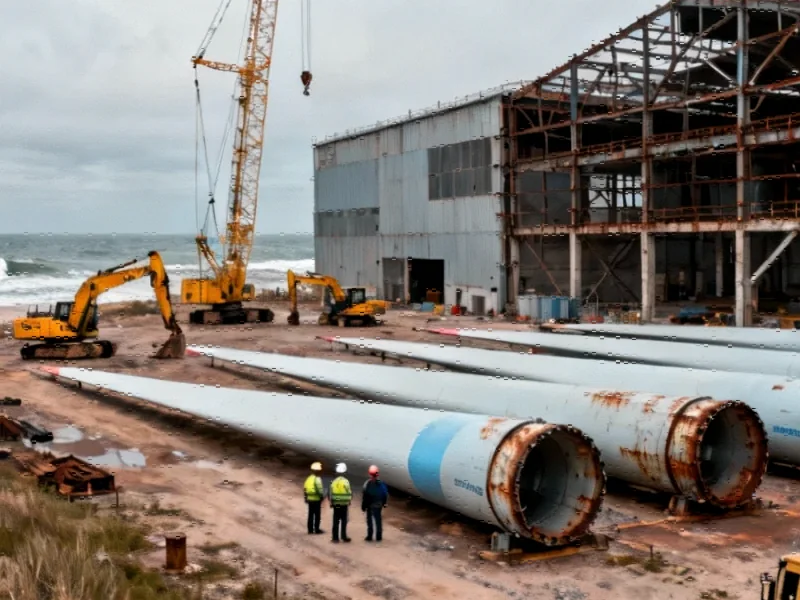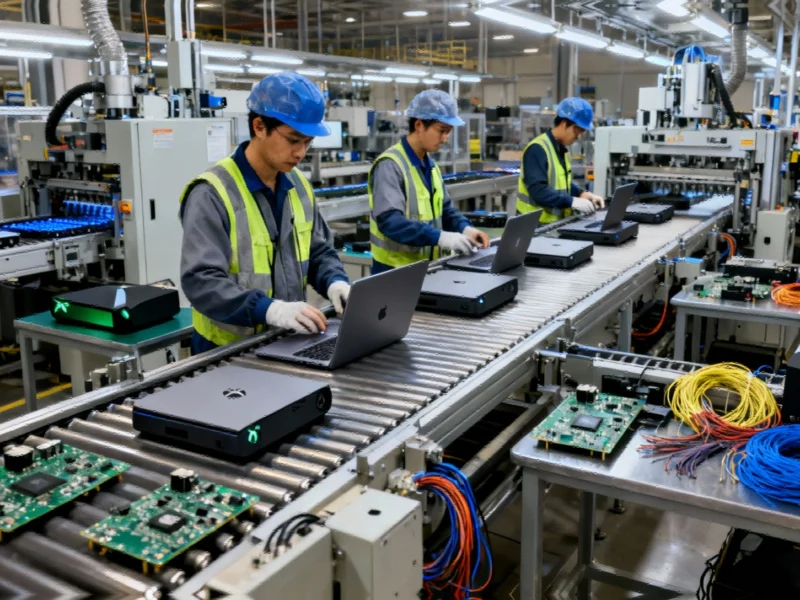Revolutionizing Metal 3D Printing with Ultrasonic Enhancement
In a groundbreaking advancement for metal additive manufacturing, researchers have developed a dual-laser approach that significantly enhances the mechanical properties of 316L stainless steel. By incorporating ultrasonic pulses directly into the Selective Laser Melting (SLM) process, this innovative technique addresses long-standing challenges in metal 3D printing while delivering remarkable improvements in material strength and durability., according to recent studies
Table of Contents
- Revolutionizing Metal 3D Printing with Ultrasonic Enhancement
- The Challenge: Overcoming Structural Weaknesses in 3D Printed Metals
- The Breakthrough: Dual-Laser Ultrasonic Intervention
- Remarkable Results: Quantifiable Improvements in Material Properties
- The Science Behind Ultrasonic Grain Refinement
- Comparative Advantages Over Existing Methods
- Industrial Implications and Future Applications
The Challenge: Overcoming Structural Weaknesses in 3D Printed Metals
Selective Laser Melting, classified under the ISO/ASTM 52900:2021 standard as a laser-based powder bed fusion process (PBF-LB/M), has faced significant barriers to widespread industrial adoption. The technology‘s extremely high cooling rates (105-107 K/s) and temperature gradients (105-107 K/m) typically result in the formation of large columnar grain structures and porosity. These structural characteristics lead to anisotropic properties—where materials exhibit different strengths and behaviors depending on orientation—severely limiting the reliability of 3D printed components for critical applications.
316L austenitic stainless steel, widely used across medical, aerospace, and automotive industries due to its excellent corrosion resistance and mechanical properties, has been particularly affected by these limitations. The traditional SLM process produces grain sizes averaging around 50 micrometers, creating inherent weaknesses in the final product., according to industry developments
The Breakthrough: Dual-Laser Ultrasonic Intervention
The research team implemented an ingenious solution using two specialized laser systems working in concert. The primary continuous ytterbium laser handles the conventional melting of metal powder, creating a melt pool approximately 100 micrometers in size. The revolutionary addition comes from a secondary quasi-continuous-wave (QCW) laser that operates with precisely controlled pulse durations and repetition rates., as as previously reported
How the ultrasonic enhancement works: When the QCW laser pulses interact with the near-surface layer of the melt pool, they generate powerful ultrasonic pulses within the molten metal. These acoustic waves create shear deformations in the just-crystallized zones, effectively breaking down the growing columnar grains and promoting the formation of finer, more equiaxed microstructures., according to emerging trends
Remarkable Results: Quantifiable Improvements in Material Properties
The experimental outcomes demonstrate substantial enhancements across multiple material properties:
- Grain size reduction: Average grain size decreased from 50 μm to 25 μm—a 50% refinement in microstructure
- Strength enhancement: Ultimate tensile strength increased by 13-15% under optimal QCW parameters
- Improved ductility: Elongation at failure increased from approximately 34% to 40%, indicating better deformation resistance before fracture
The Science Behind Ultrasonic Grain Refinement
The mechanism operates through sophisticated physical phenomena previously observed in traditional metal processing but now adapted for additive manufacturing. When ultrasonic pulses interact with the molten metal, they create alternating acoustic pressure that reaches critical thresholds for cavitation. This process generates pulsating bubbles that grow, merge, and collapse, producing localized shock waves with extreme pressure and temperature conditions.
These intense micro-environments dramatically affect the solidification process, disrupting the typical columnar grain growth and promoting nucleation of finer, equiaxed grains. The research builds upon earlier work with aluminum and magnesium alloys, where ultrasonic treatment has shown similar benefits in conventional casting processes.
Comparative Advantages Over Existing Methods
Previous attempts to incorporate ultrasonic influence in additive manufacturing typically involved external sonotrodes attached to the substrate. While these methods showed promise—reducing Young’s modulus anisotropy from 8% to 2% in 304L alloy and decreasing microhardness anisotropy from 30% to 6%—they presented practical limitations in integration and scalability.
The dual-laser approach offers significant advantages by generating ultrasound directly within the melt pool itself, eliminating the need for external transducers and providing more precise, localized control over the grain refinement process. This method has demonstrated effectiveness across multiple metal systems, including earlier success with Ti-6Al-4V alloys where similar grain size and porosity reductions were achieved.
Industrial Implications and Future Applications
This technological advancement addresses fundamental limitations that have restricted 3D printed metal components from achieving widespread use in safety-critical applications. The improved mechanical properties and reduced anisotropy mean that manufacturers can now produce components with more predictable performance characteristics across different orientations.
The implications span multiple high-value industries:
- Medical implants: Enhanced strength and durability for orthopedic and dental applications
- Aerospace components: Improved reliability for turbine blades and structural elements
- Automotive parts: Better performance for custom components and lightweight structures
As research continues to optimize laser parameters and expand the technique to other metal alloys, the potential for creating superior 3D printed metal components with tailored microstructures appears increasingly promising. This ultrasonic enhancement method represents a significant step toward making additive manufacturing a truly reliable production method for high-performance metal parts.
Related Articles You May Find Interesting
- Beyond Casimir: Why Standard Force Calculations Fail in Microscale Cavity Experi
- Silica Sand Revolution: How Industrial Waste Transforms Aluminum Composites into
- Expanding AI Horizons: The Push for Practical Multimodal Systems in Industry
- Advanced Satellite Monitoring and AI Revolutionize Maritime Safety in Dust-Prone
- Unlocking Anaerobic Digestion Mysteries: How Rare Microbes Drive Renewable Energ
This article aggregates information from publicly available sources. All trademarks and copyrights belong to their respective owners.
Note: Featured image is for illustrative purposes only and does not represent any specific product, service, or entity mentioned in this article.



